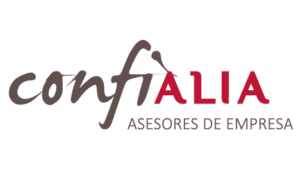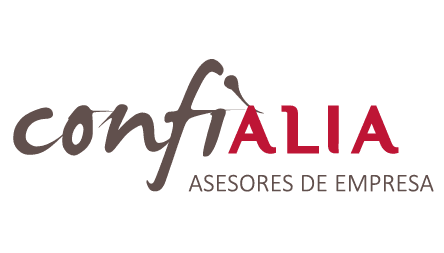On 12 May 2020 a Royal Decree Law 18/2020 was published which aims to prepare the Spanish economy for a "new normality" through a "de-escalation of the ERTES".
From Confialia we hope that the way of communicating this "Nirvana" state does not become a habit because we have not been able to send to our clients, to you, until today which measures could benefit you and which could harm you.
And all because of the ambiguity of the text. Over the days, organisations such as the Social Security have been interpreting the regulation "adjusting" the mess left by the Legislator, and therefore, today, with the calm and perspective of the weekend, we dare to send you the information on the de-escalation of the ERTES.
We will try to clarify the formalities to be carried out by companies to benefit from the exemptions of quotas during the extension of the ERTEs due to force majeure COVID-19.
And we will resolve some of the doubts raised in relation to the request for deferrals of quotas for self-employed workers who are simultaneously holders of CCCs.
Status of ERTES as of 13 May 2020
The regulation of the de-escalation of the ERTES due to force majeure COVID-19 can apply their exemptions from contributions until 30 June 2020, according to RD 18/2020, but modifying the exemption percentages whichWILL NO LONGER BE 100% OF THE SOCIAL SECURITY COSTS as they were until the full validity of RDL 8/2020, we are looking at all the possibilities.
However, the General Treasury of the Social Security (TGSS) reminds that for the application of the exemptions in the contributions accrued in the months of May and June 2020, companies must meet the following requirements:
(a) Have an ERTE due to force majeure arising from COVID-19 and as of 13-5-2020 continue, alternatively, in one of the following situations:
- total force majeure resulting from COVID-19 preventing the restart of its activity (Bar without terrace in phase 1, hotel in phase 0, premises in shopping centre, etc.), or
- partial force majeure derived from COVID-19 allowing the partial recovery of its activity (Bar with terrace that does NOT want to open).
b) That the company in a situation of partial force majeure reincorporates the affected workers through the de-escalation of the ERTEs, to the extent necessary for the development of its activity.
| Total restart of the activity of 1 or more workers, WITHOUT REDUCTION OF WORKING TIME, with the limitations set by the legislation in terms of health standards. | ||
| Type of company | May | June |
| Less than 50 employees or equivalent hired on 29-2-2020 | 85% rebate on social security contributions for workers who "leave" the ERTE to start work. | 70% rebate on social security contributions for workers who "leave" the ERTE to start work. |
| Company with more than 50 employees or equivalent hired on 29-2-2020 | 60% rebate on social security contributions for workers who "leave" the ERTE to start work. | 45% rebate on social security contributions for workers who "leave" the ERTE to start work. |
In the following table we tell you what happens if you reincorporate a part-time worker during the de-escalation of the ERTES
PARTIAL reinstatement of the activity of 1 or more workers, WITH REDUCTION OF WORKING TIME, with the limitations set by the legislation in terms of health standards.
| Type of company | May | June |
| Less than 50 employees or equivalent hired on 29-2-2020 |
85% rebate on social security contributions for workers who "leave" the ERTE to start work.
60% rebate of the Social Security contributions of the workers who "remain" in the ERTE in the part that they do NOT work. |
70% rebate on social security contributions for workers who "leave" the ERTE to start work.
45% rebate on Social Security contributions for workers who "remain" in the ERTE in the part that they do NOT work. |
| Company with more than 50 employees or equivalent hired on 29-2-2020 |
60% rebate on social security contributions for workers who "leave" the ERTE to start work.
45% rebate on Social Security contributions for workers who "remain" in the ERTE in the part that they do NOT work. |
45% rebate on social security contributions for workers who "leave" the ERTE to start work.
30% rebate of the Social Security contributions of the workers who "remain" in the ERTE in the part that they are NOT working. |
c) Finally, in the process of de-escalation of the ERTES the company will have to do the following, obviously Confialia will help you in all these procedures, but so that you know what to do:
- Communicate to the labour authority the total resignation, if applicable, from the authorised ERTE, within 15 days from the effective date of the resignation. This would mean telling the Labour Authority "my company is no longer in ERTE due to force majeure", the closest thing to "I am back to absolute normality".
- To the SEPE:
- Communicate the variations in the data contained in the initial collective application for access to unemployment protection; who leaves the ERTE and in what percentages, in the table above you can see the details better.
- changes concerning the termination of the application of the measure in respect of all or part of the persons concerned, either in the number of persons concerned or in the percentage of part-time work of their individual working time.
- To the TGSS:
-
- Communicate the situation of total or partial force majeure, for each CCC, by means of a affidavitexplain to the TGSS what the situation of your workplaces is:
- I declare that we have a bar, I am in phase 1 and I cannot open as I have no terrace and no facilities for home delivery, for example.
- Identification of the workers concernedand the period of the suspension or reduction of working hours corresponding to each of the aforementioned persons in accordance with the following schedule:
- Workers who remain in a situation of suspension of their employment contract or reduction of working hours
- Workers who resume work, in whole or in part, once the situation of partial force majeure has begun.
- Communicate the situation of total or partial force majeure, for each CCC, by means of a affidavitexplain to the TGSS what the situation of your workplaces is:
RDL 18/2020 takes advantage of the ERTES de-escalation regulation to legislate on deferrals of quotas for self-employed workers who have contracted workers; if you wish to request a deferral of quotas for both the company and those relating to the employer as a self-employed worker, you must submit a single request for deferral, using the "Deferral of payment of Social Security debts" form.

